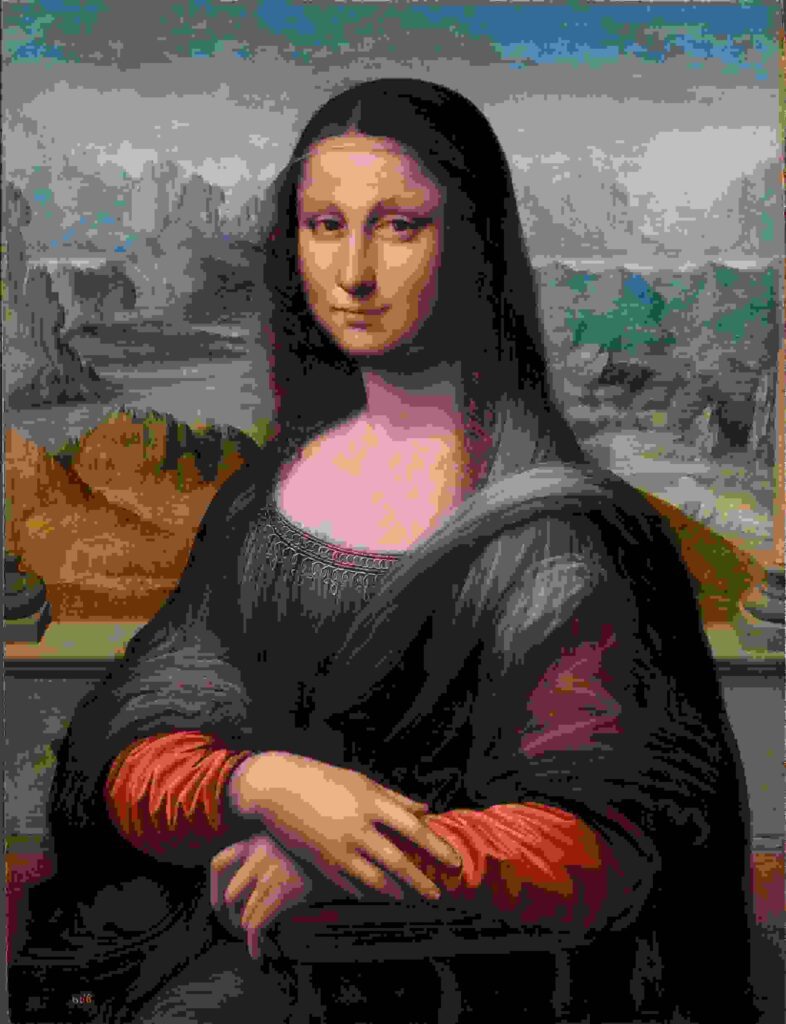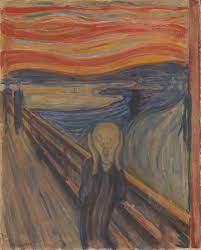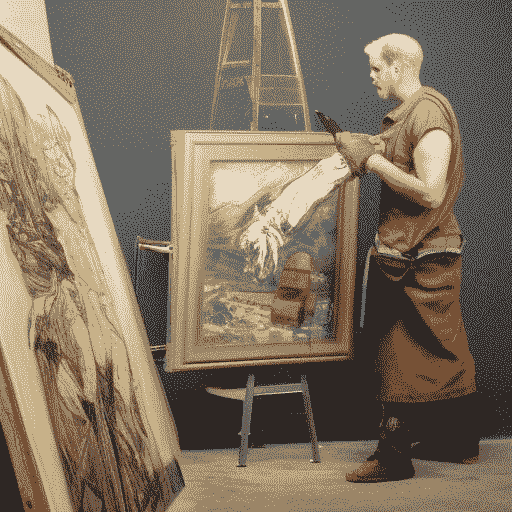Art crimes and top art thief in the history is an interesting subject to discuss, especially when it comes to famous cases of theft. It’s like finding out whether some of the world’s greatest artists ever stole a painting or not!
The answer is no, but there have been many cases of great masters committing the crime – taking paintings that rightfully belonged to someone else.
This article covers the top art thieves in history who have stolen priceless paintings, sculptures and other valuable works of art – both real and fake.
Art Crimes and Top Art Thief in the History :
Art theft is one of the most common forms of theft in the world, but it is also one of the least reported.
Art crimes can take many forms, including theft from museums, galleries and collectors’ homes, as well as thefts from auction houses and art fairs.
This article focuses on art that has been stolen from public spaces or private collections.
The art crime is a form of theft that occurs when an artwork is removed from its original location. Theft can also occur through damage or destruction of the work itself.
Theft in art crimes often involves the stealing of artwork from museums, galleries, and other institutions. The most common forms of art crimes are:
Theft – the taking of property without permission or legal authority.
Larceny – the taking of property with permission but without consent or permission to do so (for example, if someone asks for your wallet but you give it to them anyway).
Destruction – the act of destroying or damaging an object without permission.
The Most Notorious Art Thieves :
The Most Notorious Art Thieves in the history
1. The Mona Lisa

The world’s most famous painting has been stolen three times! The first was by a French con man named Vincenzo Peruggia in 1911.
He took the painting to Italy and sold it to an art dealer for $80,000. But then he tried to sell it back to Leonardo Da Vinci’s heirs, who were also trying to get their hands on it.
The deal fell through when the Italians assumed that Peruggia had stolen it himself. In 2013, police in Florence arrested a man who they say is now wanted by Interpol for stealing the painting again.
2. The Scream by Edvard Munch

In 1994, Norwegian artist Hans Holbein was commissioned by the National Gallery of Norway to paint a version of Munch’s famous 1893 work “The Scream.”
But just before leaving home, he decided to destroy his painting instead of keeping it safe at his studio in Oslo.
3. Birth of Venus

This painting by Sandro Botticelli was stolen from the Uffizi Gallery in Florence Italy in 1963 by an Italian anarchist named Mario Savio who wanted to use it as propaganda for his anti-fascist group called “Red Brigades.”
It was found later that year when police raided his home after receiving complaints about him making threats against other artists’ works at exhibitions held there as well!
Stéphane Breitwieser the French Artist :
Stéphane Breitwieser is a French artist, who has been creating art since his teens.
He is known for his large-scale paintings, which often explore themes of social inequality and political power.
His work has been featured in numerous publications, including ArtForum and The New Yorker.
He has also exhibited internationally at venues such as the Tate Modern in London and the Museum of Contemporary Art in Chicago.
His work has been recognized with awards from institutions like the Guggenheim Foundation, the National Endowment for the Arts, and the MacArthur Foundation.
The history of Stéphane Breitwieser is as impressive as his art. He was born in France but has lived in several countries, including Israel and Germany.
Stéphane’s father was a famous French filmmaker who had studied at the Sorbonne, where he directed several films before moving his family to Israel, where he continued to work as a director.
His work there was not well received by the Israeli public, but he continued to work with Palestinians. He also worked with Palestinian artists who were being held in jail in Israel by the Israeli army.
In 1974, after leaving prison, Stéphane moved to Germany and began working on film projects that focused on the Palestinian women living in refugee camps in Lebanon and Jordan.
He met many of these women through his work with Amnesty International and helped them obtain visas so they could come live in Europe or America.
America’s largest art robbery:
On May 5, 1990, a group of thieves made off with more than $50 million worth of art from a storage facility in Maryland.
The thieves were never caught, but they were believed to be part of a larger ring that had been stealing art from museums across the United States for years.
The heist was America’s largest art robbery in history. The heist was one in a series of thefts that took place between 1983 and 1990 at museums around the country.
In all, more than 1,000 pieces of artwork have been stolen over the years—most of which have never been recovered.
One thing is clear: The criminals are getting smarter about how they break into galleries and steal artwork. They’ve become more sophisticated and organized as well as more skilled at covering their tracks.
A painting by Andy Warhol sold for $100 million at auction. But the painting in question wasn’t a work of art; it was a wall.
In November 2010, an unknown suspect broke into the Isabella Stewart Gardner Museum in Boston and stole 13 works of art. The heist made headlines because it was the largest-ever robbery in American history.
But even more notable than the fact that someone stole art from an institution that houses one of the world’s great collections is what happened next: the FBI caught two men who were later convicted of masterminding the theft.
The burglars didn’t just bust through walls and steal paintings; they also left their calling card behind: a mural painted on one of the museum’s walls.
It showed two thieves with their faces covered, holding up a painting — presumably one of those stolen from Gardner Museum.
The FBI tracked down this mural and identified its creator as “Soprano,” whose real name is David Greenglass, who had worked for his sister Ethel Rosenberg during World War II when she was an atomic spy for the Soviet Union.
Isabella Stewart Gardner museum detail and history
The Isabella Stewart Gardner Museum is a museum in Boston, Massachusetts, United States. The museum was founded in 1876 by Isabella Stewart Gardner, who bequeathed money for the establishment of an art museum for the citizens of Boston. It opened at its current location in 1897.
The museum’s permanent collection includes European and American paintings from the 13th to 20th centuries, drawings and prints by Raphael and Leonardo da Vinci, and 19th-century French furniture.
It also hosts traveling exhibitions from various institutions including the Metropolitan Museum of Art and the National Gallery of Art.
The museum was housed in a building on the corner of Boylston and Clarendon streets until it moved to its current location at 185 Mount Vernon Street, Boston, Massachusetts in 1903.
The Isabella Stewart Gardner Museum is a world-renowned museum in Boston, Massachusetts. The museum was founded in 1904 by Isabella Stewart Gardner (1840–1924) and her husband, financier Edward Gardner III. The couple bequeathed their home to the city of Boston, which opened the museum on January 5, 1905.
In addition to these structures, there are 20 acres (81,000 m²) of gardens and landscaping.
The Isabella Stewart Gardner Museum is a museum in Boston, Massachusetts, United States, that displays the art collection of Isabella Stewart Gardner. It is located on the Fenway at 252 Clarendon Street in the Fenway neighborhood.
Originally known as the Fenway Court, it was designed by architect C. Herbert Patterson, who also designed the Peabody Museum of Archaeology and Ethnology. The museum opened October 15, 1933 as an adjunct to the Boston Public Library and has been called “one of the greatest museums in America.” Its permanent collection contains about 2500 objects from ancient Egypt to modern times.
Gardner’s gift was one of the largest private donations ever made to an American museum; at $50 million (equivalent to $1 billion today), it was worth more than all other gifts combined together.
The Isabella Stewart Gardner Museum is a museum in Boston, Massachusetts, United States. It was founded in 1852 by Isabella Stewart Gardner and her sister Catherine de Vegh Gardner, who were donors to the museum.
The two were also the founders of the Boston Museum of Fine Arts. The museum is housed in the 1895 former mansion of the artist John Singer Sargent at 2 Fountain Square in downtown Boston.
The museum opened on June 7, 1990, welcoming about 1.5 million visitors within its first year of operation.
In addition to American art there are also galleries dedicated to European painting from 1550 to 1750; Chinese porcelains; decorative arts; and prints
Theft for Art’s :
Art crimes have been around as long as art itself. In the history of art, there have been many instances of theft and destruction of priceless pieces of art.
The most famous case involved the Mona Lisa, which was stolen from the Louvre in Paris by an individual named Vincenzo Peruggia in 1911. This crime was widely publicized and became one of the most famous thefts in history.
In addition to his work as an art dealer, Durand-Ruel was also an avid collector who amassed one of the largest private collections ever seen at that time period.
He owned over 1,200 paintings by masters like Renoir, Monet and Pissarro but his biggest passion was photography.
In 1856, an art critic named John Ruskin wrote a book called The Seven Lamps of Architecture. In it he focused on the importance of light and shade when it comes to understanding architecture.
He also made an argument about how light was important in understanding art. He wrote: “I am not only surprised that so many people who live in cities should be unable to distinguish between the two arts of painting and sculpture but I am amazed that anyone who has any knowledge or feeling for a beautiful object should fail to see how essential it is for us to understand that those two arts are entirely different and distinct from each other.”
That passage is relevant today because it shows how Ruskin understood artists’ theft as a form of art. Today’s artists steal because they want their work to be seen by as many people as possible—and they want people to pay attention to their work and admire it.
And they want people who have money to buy their works of art so that they can continue making more things like them, creating a cycle of reproduction in which wealth begets wealth; artists’ desire for fame becomes more important than their need for respectability or even money itself.
Art thief :
Art crime is the act of stealing art, either from an individual or from a museum. The term is used to describe both the crime itself and the act of hiding the stolen work.
Art crime differs from other types of theft in that the work does not have to be sold to an outsider for financial gain.
Art theft is a major problem for museums, art galleries, and collectors around the world. It has been estimated that over $5 million worth of art is stolen each year.
Many thieves steal works on display in galleries because they believe it will be easy to sell them without much trouble.
However, they are often caught and their stolen goods are returned by law enforcement agencies or returned by their owners.
Art theft can also lead to other crimes such as identity theft or blackmailing museum staff if they do not return the stolen goods quickly enough.
Thieves who target collections owned by museums may also use these works as collateral for loans or bail money when arrested for another crime like fraud or theft from an employer’s workplace items at their home office space where they can hide them out of sight until they can make arrangements with law
Munch Museum in Oslo
The Munch Museum in Oslo is one of the world’s most popular art museums. It’s also home to one of the most famous pieces of art in the world, The Scream by Edvard Munch.
Munch completed this work in 1893 and it immediately became an international sensation. Today, it is considered one of the most important works of art ever created and is displayed in many major museums around the world.
The Museum of Modern Art has a secret. In the basement of the museum, there is a wall filled with tiny writing on it. The writing is in Russian and reads: “We are not alone.”
This is a reference to a famous painting by Yevgeny Zamyatin, which hangs in the Museum’s collection and depicts two people living together without being able to communicate with each other.
Richard Wagner Museum
The Richard Wagner Museum is a museum in Bayreuth, Germany. The museum is dedicated to the former German composer Richard Wagner and his life and work.
It was founded by Wagner’s widow Cosima in 1913 at her residence “Travelling Opera House” on the Rhine river bank in what was then Bayreuth.
The museum is located on the bank of the Neckar River, opposite the Augustus Bridge, where Wagner often walked with his wife.
In addition to housing a permanent collection of rare books, manuscripts, letters and other items relating to Wagner’s life and works, it also has an exhibition room that displays some of these items in their original context.
A large number of photographs taken by both Richard Wagner himself and others are on display as well as other related ephemera such as invitations to performances of his operas.
Crime Artist :
Crime artists are not just the subject of popular fiction; they’re also often the most prolific and skilled.
Their work is inspired by a fascination with the macabre, which can be traced back to early cave paintings, but it has evolved into a form of art that is uniquely its own.
Top Arts in the World:
The Art Crimes in the world are very popular and unique, they have their own place on this planet. These art crimes are created by people who have a deep understanding of art, they are the best artists that we have ever seen.
1. Contemporary Art Collection at the Guggenheim, New York (2001) – $57 million
2. The Mona Lisa (La Joconde) – $10 billion
3. Agostino di Duccio’s Madonna with Child Enthroned with Saints – $9.7 million
4. Rembrandt’s Night Watch – $9.5 million
5. Raphael’s Madonna of Caecilia – $9 million
6. Leonardo da Vinci’s Virgin of the Rocks – $8.7 million
7. Michelangelo’s Pietà – $8 million
8. Pablo Picasso’s Guernica – $8 million
9. Vincent van Gogh’s Self-Portrait with Bandaged Ear (Van Gogh Museum) – $7 million
10 . Paul Gauguin’s Tahitian Woman Standing in Front of a Sea Wall (Musee Picasso Mougins) –$6 million
FAQS
Are there actual art thieves?
Yes, there are actual art thieves.
Art theft is a problem that affects most major cities in the world, and it has been for decades. Theft of art is a serious crime that can have far-reaching effects on a community’s economy and culture. In some cases, stolen art can be worth millions of dollars, but even if it isn’t, the loss of such a valuable piece of history is still irreplaceable.
What was the biggest art heist in history?
The biggest art heist in history was the theft of the Mona Lisa from the Louvre Museum in Paris, France.
How do art thieve make money?
Art thieve make money by selling the stolen art on the black market. They can also sell their artwork to collectors or museums, who will pay them for it.
Who is the most forged artist in history?
he most forged artist in history is probably Vincent van Gogh.
He was a painter who lived from 1853 to 1890. He created some of the most famous paintings in history, including “The Potato Eaters” and “Starry Night.”
What is the most famous art theft in the world?
The most famous art theft in the world is the theft of “The Mona Lisa,” which occurred in 1911. The painting was taken from the Louvre Museum in Paris, France by a member of an Italian gang that went on to sell it to a private collector.
Who investigates art theft?
The police is the first line of defense when it comes to art theft. They have the power to arrest suspected thieves and can also seize their property, which may be used as evidence in court. The police may also assign a detective or investigator to conduct an investigation.
